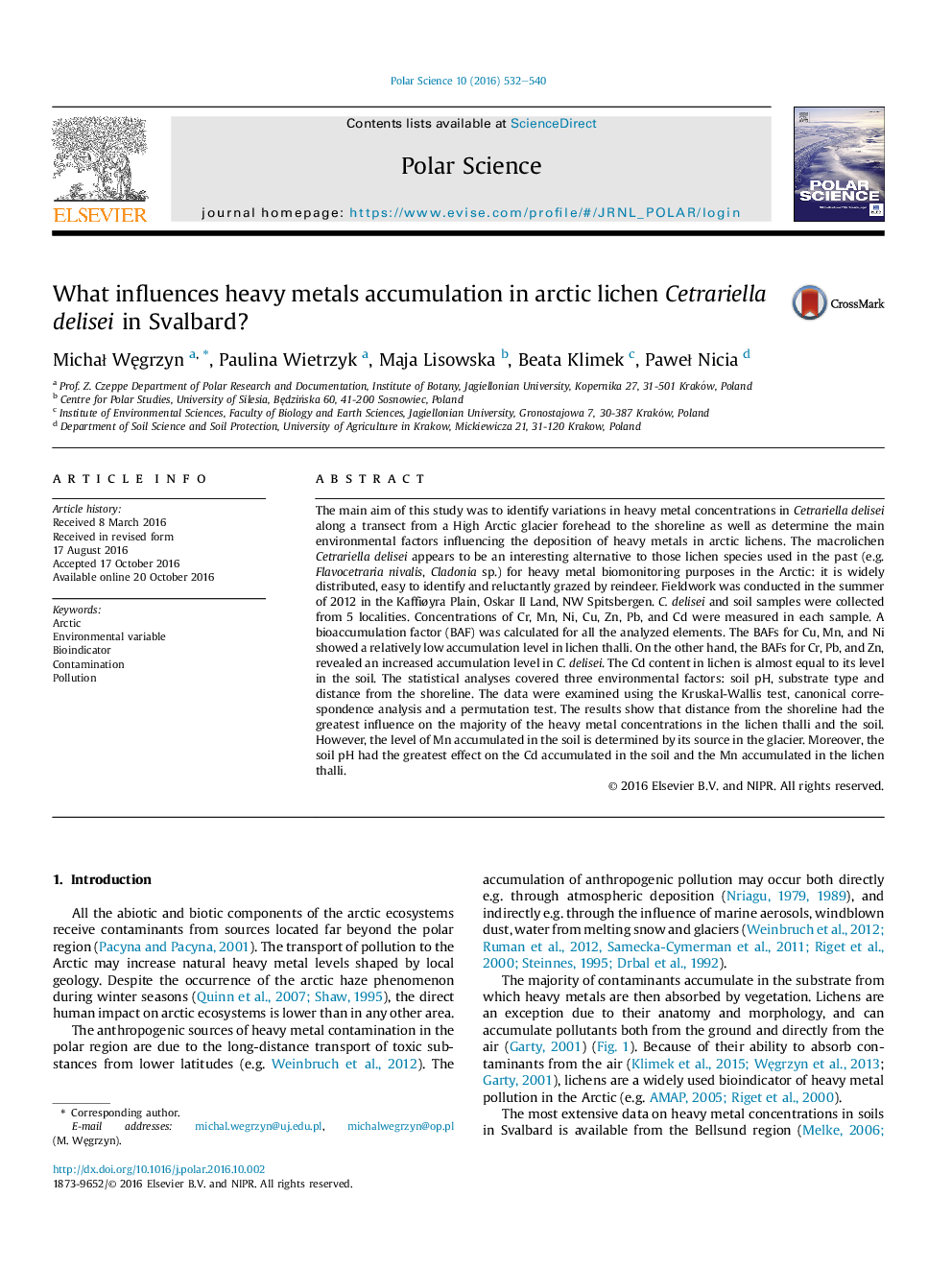| Article ID | Journal | Published Year | Pages | File Type |
|---|---|---|---|---|
| 6431525 | Polar Science | 2016 | 9 Pages |
The main aim of this study was to identify variations in heavy metal concentrations in Cetrariella delisei along a transect from a High Arctic glacier forehead to the shoreline as well as determine the main environmental factors influencing the deposition of heavy metals in arctic lichens. The macrolichen Cetrariella delisei appears to be an interesting alternative to those lichen species used in the past (e.g. Flavocetraria nivalis, Cladonia sp.) for heavy metal biomonitoring purposes in the Arctic: it is widely distributed, easy to identify and reluctantly grazed by reindeer. Fieldwork was conducted in the summer of 2012 in the Kafï¬Ã¸yra Plain, Oskar II Land, NW Spitsbergen. C. delisei and soil samples were collected from 5 localities. Concentrations of Cr, Mn, Ni, Cu, Zn, Pb, and Cd were measured in each sample. A bioaccumulation factor (BAF) was calculated for all the analyzed elements. The BAFs for Cu, Mn, and Ni showed a relatively low accumulation level in lichen thalli. On the other hand, the BAFs for Cr, Pb, and Zn, revealed an increased accumulation level in C. delisei. The Cd content in lichen is almost equal to its level in the soil. The statistical analyses covered three environmental factors: soil pH, substrate type and distance from the shoreline. The data were examined using the Kruskal-Wallis test, canonical correspondence analysis and a permutation test. The results show that distance from the shoreline had the greatest influence on the majority of the heavy metal concentrations in the lichen thalli and the soil. However, the level of Mn accumulated in the soil is determined by its source in the glacier. Moreover, the soil pH had the greatest effect on the Cd accumulated in the soil and the Mn accumulated in the lichen thalli.
